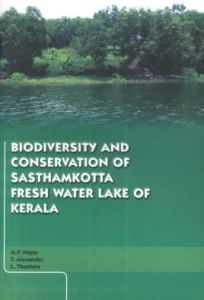
Contents: Preface. Acknowledgement. 1. Introduction. 2. GIS data of Sasthamkotta Lake and its environs. 3. Materials and methods. 4. Biodiversity studies. 5. Pollution studies. 6. Proposed management strategies and actions. References. Appendix. Index.
Sasthamkotta Lake is the largest Fresh Water Lake in Kerala. The Lake is situated 30 Km North of Kollam. The area of the Lake is 3.73 Km2. It is a source of drinking water of Sasthamkotta, Kollam and adjoining areas. It is an internationally recognized wetland having the status of Ramsar Site from November 2002 onwards. The Sasthamkotta Lake is surrounded on three sides by hillocks and on the south by a bund which separated the Lake from the surrounding water bodies and paddy fields. The River Kallada flows through the southern side. The Lake receives its water from precipitation, surface flow from its catchment areas and from underground springs. The Lake has the capacity to hold 223390 million liters of water. The water bodies seen adjacent to the lake on the eastern side are Chittumala Chira, Cherayattu Kayal and Chelurpola Kayal. The Sasthamkotta Lake ecosystem is under threat. A variety of problems faced by the Lake are encroachments, sedimentation of the lake due to agricultural activities, land filling, pollution due to urban sanitary discharge and destruction of the vegetation around the lake. The authors have proposed Conservation Action Plan for the protection of the threatened wetland ecosystem of Sasthamkotta Lake.
